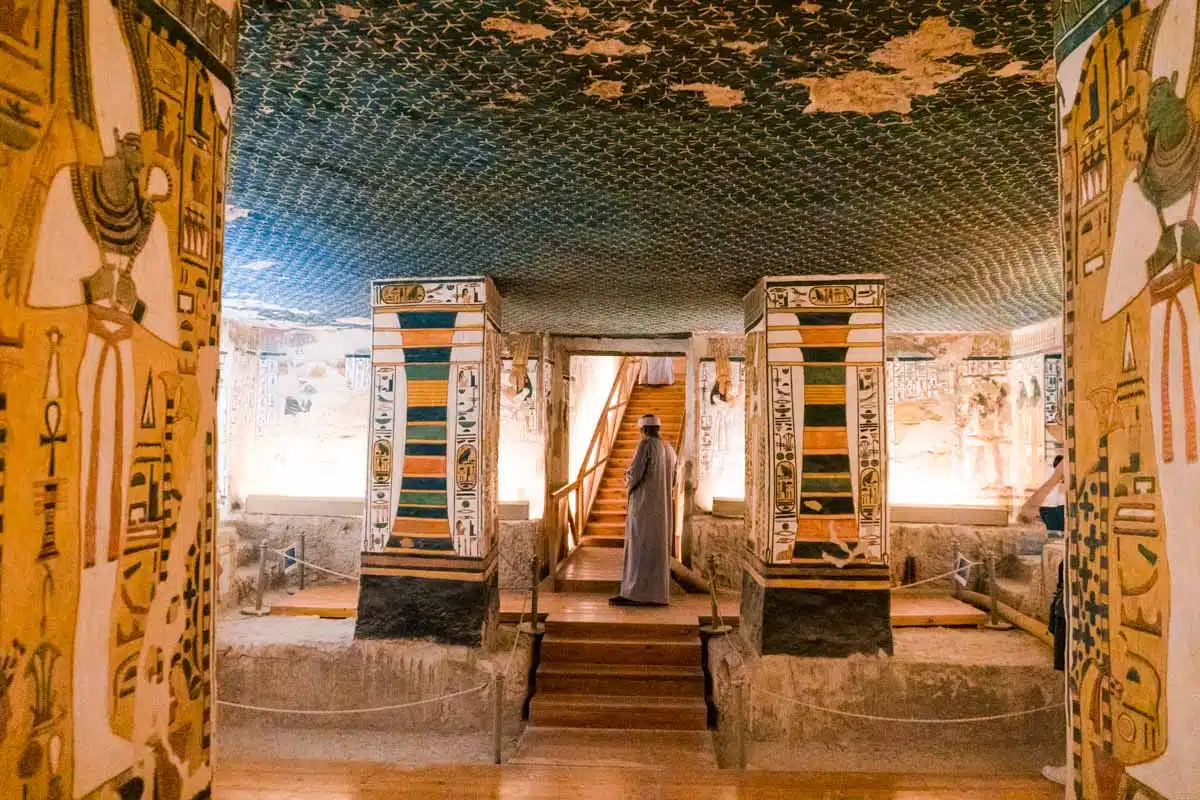Historical Context and Significance
Nefertari, the beloved Great Royal Wife of Pharaoh Ramesses II, is honored within these walls, showcasing her immense importance in ancient Egyptian society. The elaborate artwork and divine imagery within the tomb serve not just as decoration but as spiritual guides, aimed at protecting Nefertari during her journey through the underworld—an essential aspect of Egyptian religious beliefs. The relationship between Nefertari and Ramesses II is highlighted through the tomb’s opulence, reflecting the deep affection he had for her and her significant role in the kingdom.

Nefertari’s tomb was discovered in 1904 and is one of the most well-preserved tombs in Egypt, providing invaluable insights into royal burial practices and the significance of women in ancient Egyptian society . The existence of such a lavish tomb for a queen underscores the high status women could attain, particularly in relation to their husbands and their roles in the state.
Artistic Mastery
The tomb’s vibrant colors and detailed carvings are a testament to the artistry of the period, showcasing not only the technical skills of the craftsmen but also the cultural values of the time. The frescoes display a rich tapestry of life, deities, and funerary practices, each telling a story that echoes through the ages. Scholars often point to the tomb as a vital resource for understanding the art and religious practices of ancient Egypt, as it encapsulates the belief systems and values that shaped the civilization.

The paintings within the tomb are not just decorative; they are imbued with meaning. They depict Nefertari in the presence of various gods, offering prayers and performing rituals that are intended to secure her safe passage in the afterlife . The artistry of the frescoes represents a peak in Egyptian artistic achievement, showcasing the unique techniques and vibrant palettes employed by ancient artisans.
Visitor Experience
Visiting the Tomb of Nefertari transports individuals back in time, allowing them to experience the richness of one of the world’s most powerful civilizations. The atmosphere is imbued with a sense of reverence for the past, making it a must-see for anyone interested in ancient history and art. The tomb’s accessibility, coupled with informative signage, allows visitors to appreciate not only its beauty but also its historical context.

The Tomb of Nefertari is not just a burial site; it stands as a powerful reminder of the artistry, beliefs, and legacy of ancient Egypt, continuing to inspire awe and admiration in those who venture into its sacred space. For more information on this remarkable tomb and its significance, you can explore resources like the Egyptian Museum’s website or scholarly articles on ancient Egyptian history.

